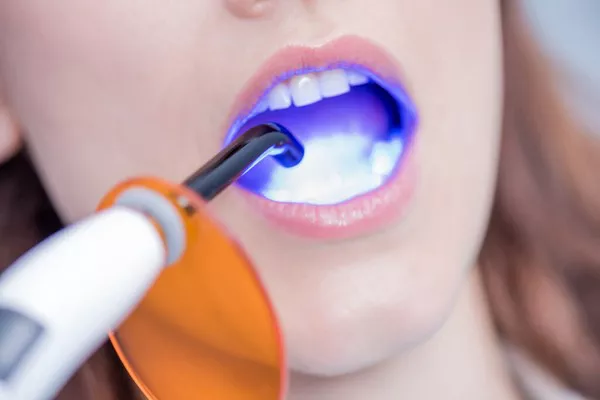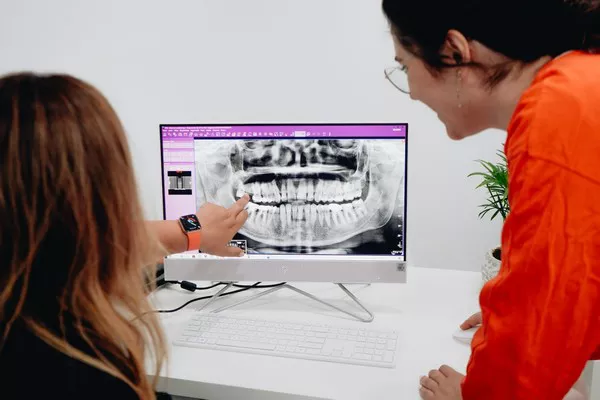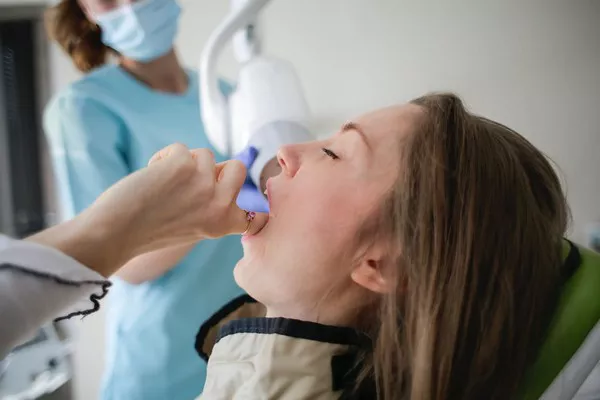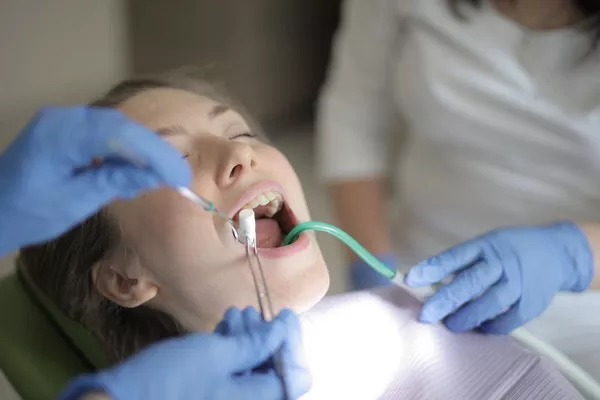Orthodontic treatment is a significant investment in dental health, aiming to correct malocclusions, improve oral function, and enhance aesthetic appeal. This guide delves into the mechanisms of tooth movement, the types of orthodontic appliances, the treatment process, and addresses common concerns.
The Basics of Tooth Movement
How Teeth Are Connected to Bone
Understanding the basics of tooth movement starts with how teeth are anchored in the mouth. Each tooth is connected to the jawbone by a specialized structure called the periodontal ligament. This ligament is a complex network of fibers that attach the tooth root to the alveolar bone.
The periodontal ligament plays a crucial role in orthodontic treatment. It acts as a shock absorber during chewing and allows for the slight movement of teeth, which is essential for orthodontic adjustments. When orthodontic appliances apply pressure, the ligament responds by signaling the surrounding bone to remodel. This remodeling process involves bone resorption (breaking down bone) on the pressure side and bone deposition (building new bone) on the tension side, allowing the tooth to move into the desired position.
The Concept of Gentle Pressure
Orthodontic appliances, whether traditional braces or clear aligners, work on the principle of applying controlled, gentle pressure to teeth. This pressure stimulates bone remodeling, a biological process where the bone is constantly being broken down and rebuilt. The gradual application of force ensures that this process is slow and steady, preventing damage to the teeth and surrounding structures.
Controlled forces are critical. Too much pressure can damage the periodontal ligament and the bone, leading to complications, while too little pressure will not achieve the desired movement. The balance achieved in orthodontic treatment is essential for effective and safe tooth movement.
Different Types of Orthodontic Appliances
Traditional Braces
Traditional braces have been the cornerstone of orthodontic treatment for decades. They consist of several key components:
Brackets: These small, square-shaped pieces are bonded directly to the front of each tooth. Brackets are usually made of metal, ceramic, or plastic.
Archwires: The archwire is a thin metal wire that runs through the brackets, connecting them. It serves as a guide, or track, for teeth to follow as they move.
Bands: These are metal rings that encircle the back molars, providing an anchor for the archwire.
Ligatures: Small elastic or metal ties, known as ligatures, secure the archwire to the brackets.
Together, these components work by exerting continuous pressure on the teeth. Adjustments are made periodically by the orthodontist, tightening or replacing the archwire to maintain the desired pressure and guide teeth into their proper positions.
Clear Aligners
Clear aligners have revolutionized orthodontic treatment by offering a nearly invisible alternative to traditional braces. These aligners are custom-made, removable trays made of clear plastic that fit snugly over the teeth.
Custom Trays: Each aligner is designed to move teeth incrementally. Patients receive a series of aligners, with each tray slightly different from the previous one, gradually shifting teeth into alignment.
Comfort and Convenience: Clear aligners can be removed for eating, brushing, and flossing, making them a convenient option for many patients. They also tend to be more comfortable than traditional braces, as they do not have wires or brackets that can irritate the mouth.
Other Appliances
In addition to braces and aligners, other orthodontic appliances may be used to address specific issues:
Retainers: After active treatment, retainers are crucial for maintaining the new positions of teeth. They can be removable or fixed and help prevent teeth from shifting back.
Palatal Expanders: These devices are used to widen the upper jaw to correct crossbites and create more space for crowded teeth. They apply gentle pressure on the palate to expand it gradually.
Headgear: Sometimes used in more severe cases, headgear applies external force to guide the growth of the jaw and correct bite discrepancies.
see also:Understanding Orthodontic Expenses
The Process with Visuals
Using Diagrams or Animations
Visual aids are essential for understanding how orthodontic appliances apply pressure and facilitate tooth movement. Diagrams can show:
- The anatomy of a tooth, including the periodontal ligament and alveolar bone.
- How brackets and archwires work together in traditional braces.
- The step-by-step process of how clear aligners shift teeth.
Animations can further enhance comprehension by showing the dynamic process of teeth moving over time. These visuals are invaluable in explaining complex biological and mechanical processes in a simple, digestible manner.
Before & After Photos
Real-life examples of successful orthodontic cases can be particularly impactful. Before and after photos provide concrete evidence of the transformation that orthodontic treatment can achieve. These images highlight:
- Improvements in tooth alignment and bite correction.
- Enhanced facial aesthetics and smile appearance.
- Positive changes in oral function and health.
The Treatment Phases
Initial Consultation & Treatment Planning
The orthodontic journey begins with a comprehensive initial consultation. This phase includes several key steps:
Diagnosis: A thorough examination is conducted, including taking dental impressions, photographs, and X-rays. This information helps the orthodontist assess the patient’s dental and skeletal structure.
Treatment Plan: Based on the diagnosis, a personalized treatment plan is created. This plan outlines the type of appliances needed, the estimated duration of treatment, and the expected outcomes. Patients have the opportunity to discuss their goals and ask questions.
Active Treatment Phase
The active treatment phase involves wearing braces or aligners to move the teeth into the desired positions. Patients can expect:
Regular Adjustments: For traditional braces, regular visits to the orthodontist are necessary for adjustments. The archwires are tightened or replaced to ensure continuous pressure. For aligners, new trays are provided periodically.
Potential Discomfort: It’s common to experience some discomfort, especially after adjustments. This discomfort is usually mild and temporary, indicating that the teeth are moving. Over-the-counter pain relievers and soft foods can help manage this discomfort.
Retention Phase
The retention phase is crucial for maintaining the results achieved during active treatment. It involves wearing retainers to prevent teeth from shifting back. This phase includes:
Removable Retainers: These are worn at night and can be taken out for eating and cleaning.
Fixed Retainers: These are bonded to the back of the teeth and provide continuous support.
Patients must follow their orthodontist’s instructions regarding retainer use to ensure long-term success.
see also: Understanding the Costs of Diamond Braces
Common Concerns and Questions
Pain or Discomfort
One of the most common concerns about orthodontic treatment is pain or discomfort. Patients often worry about how much pain they will experience and how to manage it. It’s important to reassure patients that while some discomfort is normal, it is typically mild and temporary. Tips for managing discomfort include:
- Using over-the-counter pain relievers.
- Eating soft foods after adjustments.
- Using orthodontic wax to cover any sharp edges of brackets or wires.
Eating Restrictions
Orthodontic treatment, especially with traditional braces, may require some dietary adjustments. Patients should avoid hard, sticky, and chewy foods that can damage the braces. Instead, they should opt for softer foods that are easier to chew and less likely to cause issues. Some recommendations include:
- Avoiding nuts, popcorn, and hard candies.
- Cutting fruits and vegetables into smaller pieces.
- Opting for soft foods like yogurt, mashed potatoes, and pasta.
Oral Hygiene
Maintaining good oral hygiene is essential during orthodontic treatment. Braces and aligners can create additional nooks and crannies where food particles and plaque can accumulate. Patients should:
- Brush after every meal using a fluoride toothpaste and a soft-bristled toothbrush.
- Use interdental brushes or floss threaders to clean between brackets and wires.
- Rinse with an antibacterial mouthwash to reduce the risk of gum disease.
- Regular dental check-ups and professional cleanings are also important to keep the teeth and gums healthy throughout the treatment.
Conclusion
Orthodontic treatment is a complex but highly effective way to achieve a healthy, functional, and aesthetically pleasing smile. Understanding the basics of tooth movement, the various types of orthodontic appliances, and the different phases of treatment can help patients make informed decisions and manage their expectations. By addressing common concerns and emphasizing the importance of oral hygiene, orthodontic treatment can be a smooth and rewarding journey towards better dental health and confidence.
FAQs about Orthodontic Treatment and Its Effects
1. does orthodontic treatment cause teeth to move?
Orthodontic treatment moves teeth through the application of continuous, gentle pressure over time. Braces, clear aligners, or other orthodontic appliances apply this pressure to the teeth, which in turn affects the periodontal ligament—a network of fibers and cells surrounding the tooth roots. The pressure causes bone remodeling: the bone on one side of the tooth is resorbed (broken down), and new bone is formed on the other side. This gradual process allows teeth to shift into their proper positions within the jaw.
2. Do braces change your jawline?
Braces can indeed influence the jawline, particularly in younger patients whose bones are still growing. By properly aligning the teeth and correcting bite issues, braces can help reshape the jaw and improve facial symmetry. In more complex cases, orthodontic treatment can be combined with orthognathic (jaw) surgery to address significant jaw discrepancies, leading to more dramatic changes in the jawline and overall facial structure.
3. How long does orthodontic treatment last?
The duration of orthodontic treatment varies based on the individual’s needs, but on average, it lasts between 18 and 24 months. This period can be shorter for minor corrections and longer for more complex cases. Factors influencing the duration include the severity of the dental issues being addressed, the type of braces or orthodontic appliances used, patient compliance, and the biological response to treatment.
4. At what age do braces stop working?
Braces can be effective at almost any age, as long as the teeth and gums are healthy. There is no upper age limit for orthodontic treatment; many adults successfully undergo treatment to correct misalignments and improve their smiles. However, certain considerations apply to older adults, such as slower bone remodeling and potential preexisting dental conditions. Treatment might take longer and require additional dental care, but braces can still be very effective.
You Might Be Interested In






























